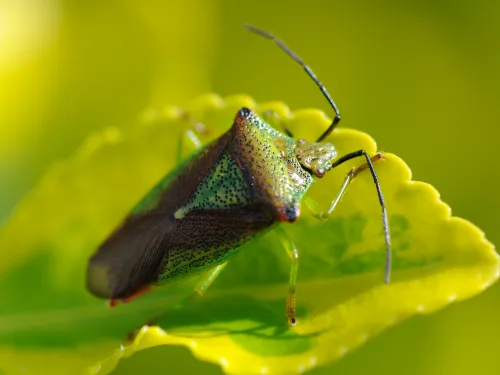
Hawthorn shieldbug
Our largest shieldbug, the red-and-green hawthorn shieldbug can be seen in gardens, parks and woodlands, feeding on hawthorn, rowan and whitebeam. The adults hibernate over winter.

From stink bugs and shieldbugs to pondskaters discover the world of small insects and how to identify them in our wonderful guide to common bugs in Kent.

Our largest shieldbug, the red-and-green hawthorn shieldbug can be seen in gardens, parks and woodlands, feeding on hawthorn, rowan and whitebeam. The adults hibernate over winter.
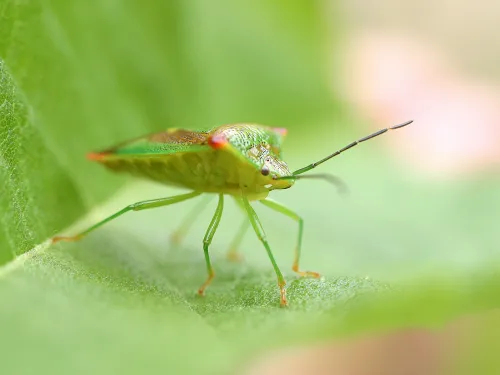
As its name suggests, the birch shieldbug can be found feeding on silver birch, and sometimes hazel, in mixed woodland. Adults hibernate over winter, emerging in spring to lay their eggs.

The Parent bug lives up to its name. The female lays her eggs on a Silver birch leaf, watching over them until they hatch. She stays with the young until they are adults. Other shield bugs lay their eggs and leave.

The spiked shieldbug has fearsome shoulder projections or 'spikes' and a predatory nature. This brown bug feeds on caterpillars and other insects in woodlands and on heathlands.

The shoulders of the Forest bug are distinctive - they are square-cut, almost rounded, unlike the other 'spiked' shield bugs. This bug can be found in woodlands, feeding on the sap of oak trees.
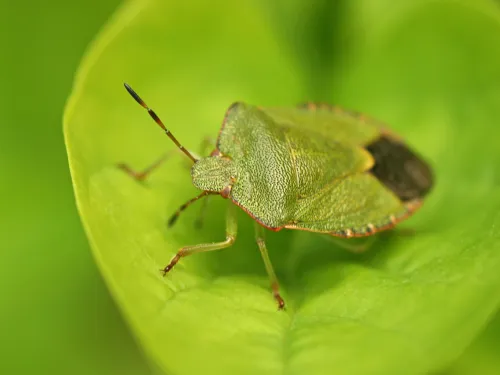
The common shieldbug was once restricted to Southern England, but has since been moving northwards and is now quite widespread. It can be found in all kinds of habitats from gardens to farms.
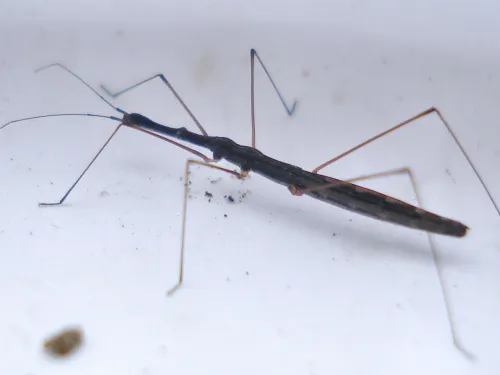
Found in ponds and marshes, the fragile look of the Common water-measurer belies its fierce nature. A predator of small insects, it uses the vibrations of the water's surface to locate its prey.
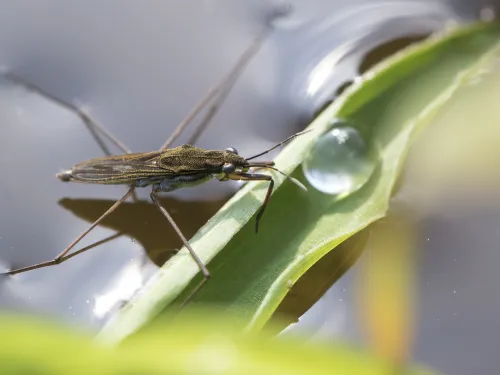
The common pond skater can be seen 'skating' over the surface of ponds, lakes, ditches and slow-moving rivers. It is predatory, feeding on small insects by detecting vibrations in the water's surface.

The water scorpion is not a true scorpion, but it certainly looks like one! An underwater predator, it uses its front pincer-like legs to catch its prey. Its tail actually acts as a kind of 'snorkel', rather than a sting, so it can breathe in the water.
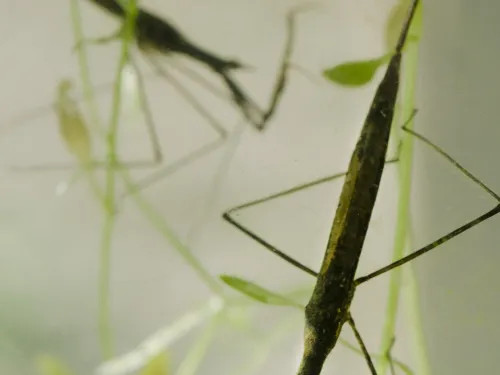
The water stick insect looks just like a mantis. An underwater predator, it uses its front legs to catch its prey. Its tail acts as a kind of 'snorkel', so it can breathe in the water. Look for it in ponds and lakes.

An underwater predator, the Saucer bug uses its front pincer-like legs to catch its prey. It can be found at the bottom of muddy, weedy ponds; but handle with care - it can inflict a painful bite!
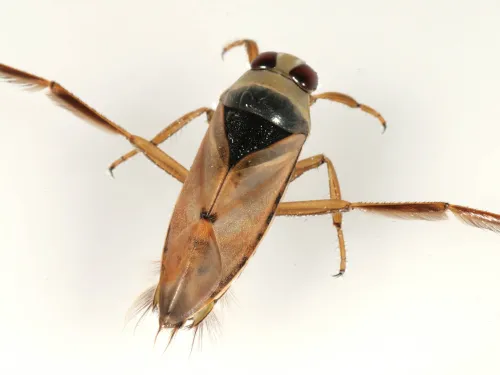
The fearsome common backswimmer hunts insects, tadpoles and fish. It uses its oar-like legs to swim upside-down under the water's surface where unsuspecting prey can be found.
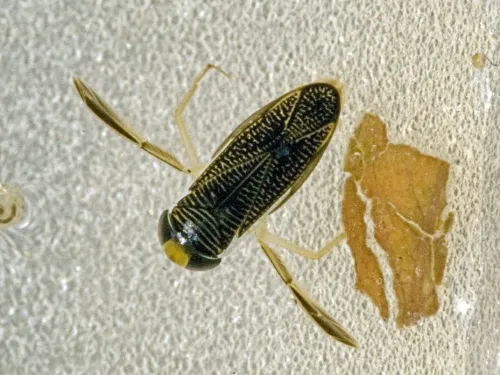
Similar to the Common backswimmer, the Lesser water boatman has oar-like legs to help it swim, but it does not swim upside-down. It is herbivorous and can be found at the surface of ponds, lakes and ditches.
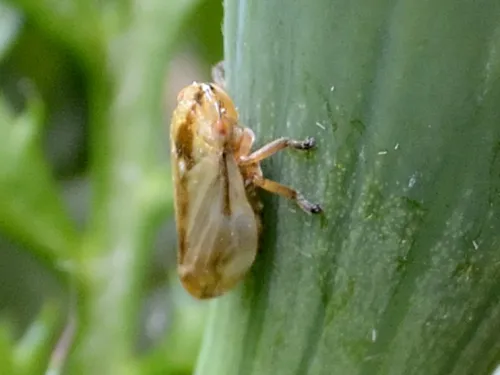
In spring and summer, look out for 'cuckoo-spit' - the frothy mass of bubbles that appears on plant stems everywhere. This is actually the protective covering for the nymphs of the tiny Common froghopper.
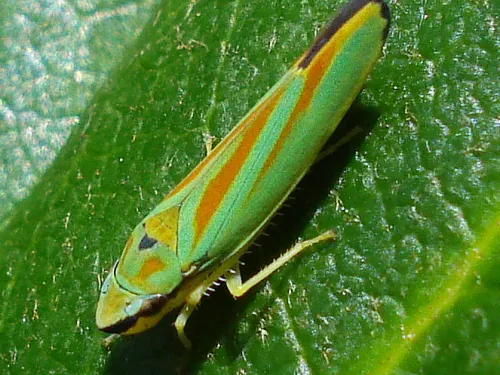
An introduced species, the Rhododendron leafhopper is a striking mix of green and red, with a black stripe across its face. It can be found feeding on Rhododendrons (also introduced) in Southern England.
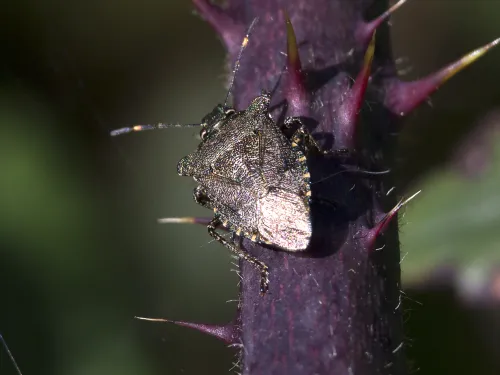
Unlike many of its relatives, this shimmering shieldbug is a predator, feasting on caterpillars and a variety of other insects.
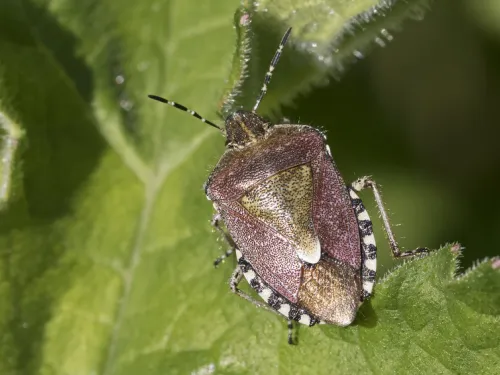
This large shieldbug lives up to its name, bristling with long pale hairs. It's a common sight in parks, hedgerows and woodland edges in much of the UK.
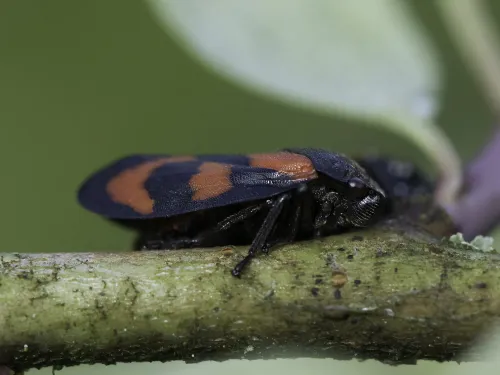
This distinctive bug is often seen basking on low-growing plants in spring and summer.
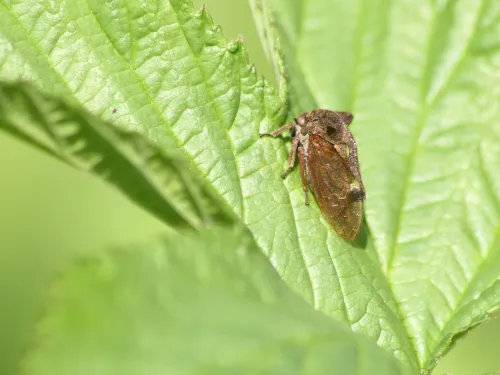
This bizarre bug can be found on plants in woodland rides and clearings.
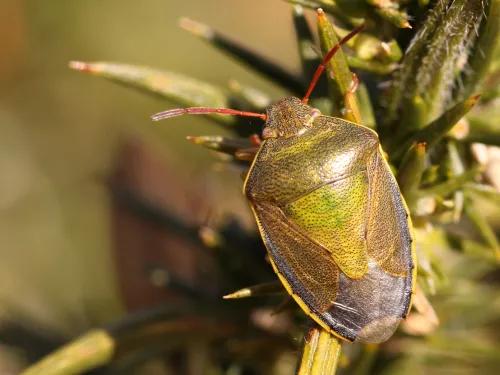
As the name suggests, this large shieldbug is often found on gorse bushes.